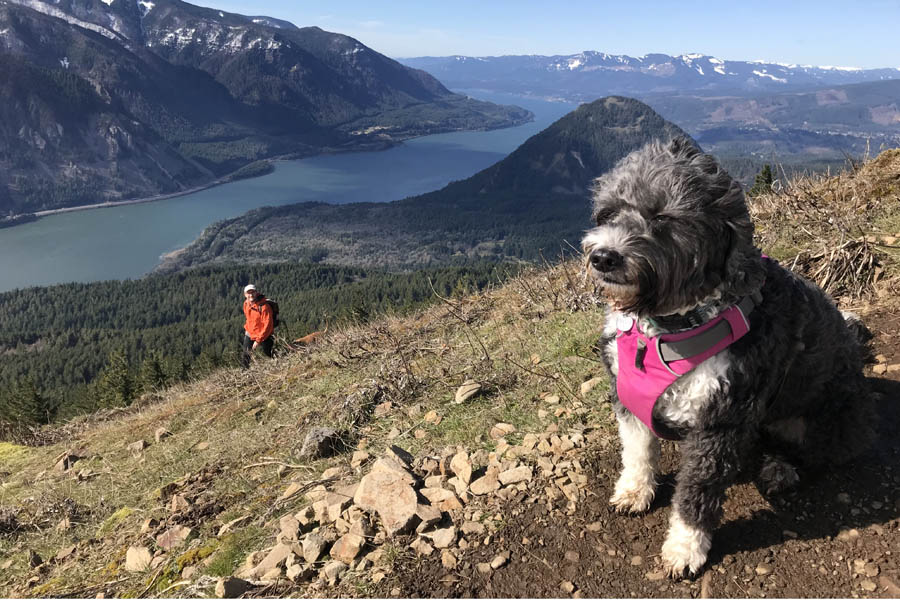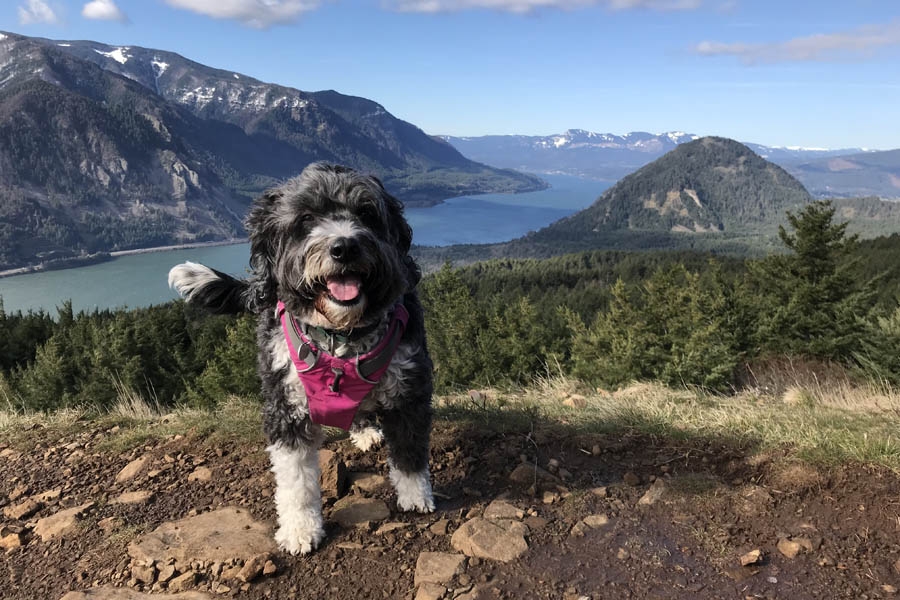A recently announced permit system for the popular Dog Mountain trail reflects growing concern that the Columbia River Gorge is outgrowing its current management system.
“Down the road, you may see that area managed more like a national park,” says Kevin Gorman, executive director of Friends of the Columbia River Gorge. “These places are getting loved to death. We have to start taking steps and seeing what works.”
In response to increased visitor traffic, the U.S. Forest Service is undertaking a congestion mitigation study with the Oregon Department of Transportation and Multnomah County. Hiking permits for other trails didn’t make the short list of options, but officials are considering additional parking fees and other ways to encourage transit ridership.
“We don’t necessarily have solutions right now,” says Rachel Pawlitz, a spokesperson for the Forest Service. “But we’re having the right conversations.”
Although the Columbia Gorge National Scenic Area spans 292,500 acres, 80% of visitors crowd into the “waterfall area”: the trails closest to I-84 and Highway 14 on the Washington side. On sunny weekends, Dog Mountain (on the Washington side) and the two other most popular Gorge trailheads, Eagle Creek and Oneonta Gorge, look more like crowded city thoroughfares than hiking trails.
“If you’ve ever been out there [Dog Mountain] on a weekend during wildflower season, it can resemble a tailgate party,” says Gorman.
Trail closures from the Eagle Creek Fire will likely worsen traffic on the Washington side this season. “We’ve already seen that in early visitor numbers,” Pawlitz says. “It’s not hypothetical.”
Related story: EcoZoned
Beginning March 31, hikers will need one of 165 daily permits to hike Dog Mountain, a 7-mile trek famous for its views and wildflower displays. Permits cost $1.50 each, just enough to cover the program’s administrative costs.
Hoping to promote public transit in the Gorge, the Forest Service is offering free permits for visitors who ride a Skamania County weekend shuttle to the trail. The agency also worked with businesses in small towns like Stevenson to offer a $2 discount for shuttle riders.
“Really the primary driver for this permit system is to encourage them [hikers] to use the shuttle,” says Rachel Pawlitz. “The local community will get more business out of day hikers. And if you’re the visitor you end up having a net-zero cost.”
“If you’ve ever been out there [Dog Mountain] on a weekend during wildflower season, it can resemble a tailgate party.” — Kevin Gorman
The Dog Mountain permit system is one the first to be implemented on a day use trail in the Pacific Northwest. And if the system succeeds in driving visitors toward transit, it could provide a model for a new approach.
In partnership with ODOT and the Forest Service, Gorman has tossed around ideas for a new management regime, one that would look more like national parks, where visitors park in central lots and ride shuttles to popular hikes and viewpoints.
A Gorge-wide national park-style shuttle is not such a far-flung idea. Riders have been turning out in record numbers for the Columbia Gorge Express. The service will start running year-round as early as this summer.
Related Story: The Bus is Back
But don’t expect the Gorge to turn into a national park. Residents need to access the 13 urban areas within the National Scenic Area, so parking and car travel will always be on the table.
“It can never really be exactly like a national park,” Pawlitz says. “We’re a really important transportation and communication corridor.”
The Dog Mountain system is designed to solve an immediate safety problem — cars parked illegally on a sharp left turn.
“It’s a little clunky and it’s not ideal,” Gorman says. “but it’s taking a step in the right direction.” Whenever possible, Gorman says, permits should be designed to limit the number of parked cars, not the number of hikers

Another possible solution to congestion in the Gorge is providing alternative trail systems that draw visitors away from the overcrowded waterfalls.
Friends of the Columbia Gorge has spearheaded a campaign for a Gorge Towns to Trails loop, a multimillion-dollar, 200-mile hiking path between the major cities near the Gorge. The completed trail system would connect Washougal to Stevenson, Hood River to the Dallas and Lyle to the Cherry Orchard Trail.
Much like European hiking trails, visitors could hike from town to town, frequenting local breweries, restaurants and hotels along the way.
Ninety percent of the proposed route already lies in the public domain. Now, Gorman says, the focus is on securing right-of-way for the other 10%.
“We’re trying to fill in those gaps,” Gorman says. “But it takes the government agencies to step up and implement.”
Until that happens, Portland residents will have to start thinking of Gorge hiking as more than a convenient backyard jaunt. Taking a day hike means buying permits, reading transit schedules and planning extra time for traffic jams.
“The Gorge has often been this impulsive, last-minute thing,” Gorman says. “This season the people who plan ahead will have the best time.”
To subscribe to Oregon Business, click here.






